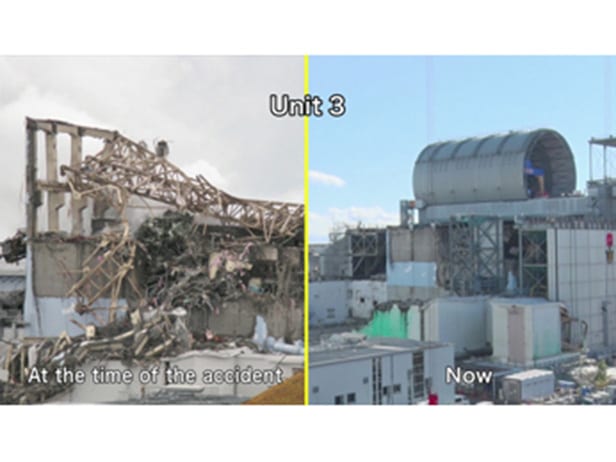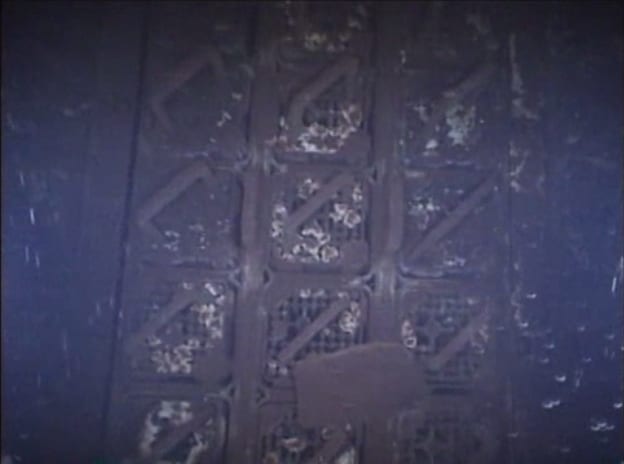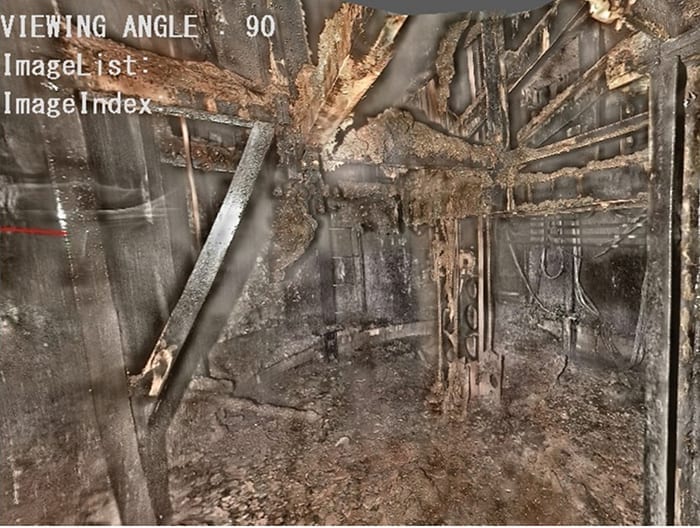Fukushima’s Decade-Long Shadow Made Nuclear Safer
The post Fukushima's Decade-Long Shadow Made Nuclear Safer appeared first on POWER Magazine.

Koji Okamoto, director general of the Japan Atomic Energy Agency's (JAEA's) Collaborative Laboratories for Advanced Decommissioning Science (CLADS), can pinpoint the specific moment that cemented his calling. Ten years ago, he was a University of Tokyo nuclear engineering professor working on nuclear safety measures as part of a government council. He was on a business trip in the UK when he first learned a 3-minute, magnitude 9.0 temblor had rocked Japan's eastern coast on March 11, 2011, inundating it with a series of tsunami waves as tall as 38.9 meters (130 feet). The next day, though his business took him to Germany, he watched aghast on television as the crisis amplified into a nuclear emergency at Tokyo Electric Power Co.'s (TEPCO's) six-unit Fukushima Daiichi Nuclear Station, and prompted the first hydrogen explosion at Unit 1, severely damaging its reactor building.
I never imagined that a reactor building would be destroyed by a hydrogen explosion," Okamoto recalled. I was shocked, and at the same time decided to dedicate the rest of my life to the handling of this accident," he said.
Okamoto was prescient. In the days that followed, the catastrophe only deepened, and in the decade since, it has had vast, serious and complex implications. As chronicled in myriad reports over the past 10 years, the plant was stricken by a 15-meter (49-foot) tsunami that inundated most of its backup power supply (12 of 13 emergency diesel generators located in the basements of the turbine buildings), and interrupted critical cooling functions at the plant's three units that were operating at the time: Daichi 1, 2, and 3.
 |
1. Inside the spent fuel pool of Fukushima Daiichi Nuclear Power Station Unit 4. Courtesy: Tokyo Electric Power Co. (TEPCO) |
Despite efforts to maintain control, the reactor cores of Units 1, 2, and 3 overheated, and their nuclear fuel melted. A reaction between the zirconium of the fuel-cladding tubes and water vapor generated a large amount of hydrogen, and the gas and radioactive materials discharged into the primary containment vessel (PCV) when TEPCO depressurized the reactor pressure vessels (through wet well venting). The gas containing the hydrogen leaked and accumulated in the upper area of the reactor buildings and triggered an explosion at Unit 1 on March 12, and, two days later, at Unit 3. At Unit 4, which had been shut down for periodic inspection, the nuclear fuel had been transferred to a spent fuel pool (Figure 1). But after the tsunami, both cooling and feedwater functions were lost, forcing crews to spray water over the pool. On March 15, the reactor building of that unit also exploded.
 |
2. A frame grab from an April 2018 video that shows the inside of the containment vessel at Unit 2. Courtesy: International Research Institute for Nuclear Decommissioning (IRID) |
Ten years later, fuel and debris removal at Daichi is ongoing. While TEPCO and the government continue to grapple with contaminated water accumulation, work is continuing-despite COVID-19 challenges-to remove fuel debris at Unit 2 (Figure 2) and Unit 3's spent fuel pool. Decommissioning entities have so far deployed various measures to remove rubble accumulated in the buildings and investigate the condition inside the PCVs using robots. According to Japan's July 2020-revised long-term roadmap, fuel removal from all spent fuel pools is expected by 2032. Plans also entail installation of a large cover" at Unit 1 around 2023, enabling removal of rubble at Unit 1, but actual fuel removal is slated to begin at Unit 1 and 2 between 2024 and 2028.
The accident has been especially costly to TEPCO. As of April 2020, the company had paid $95 billion in compensation. A district court in September 2019, however, acquitted three TEPCO management members accused of professional negligence that led to the accident.
On a wider level, Japan, which continues to be rattled by the Great East Japan Earthquake and tsunamis that resulted in at least 22,000 deaths including indirect fatalities, has ramped up stringent oversight on its nuclear industry. The toll on its nuclear generators has been steep. In Fukushima's immediate aftermath, Japan issued safety regulations and reviews that affected its entire 50-reactor fleet. Between September 2013-when Ohi 3 and 4 were shut down-and August 2015, when Sendai 1 and 2 restarted, Japan's entire reactor fleet went black. As of February 2021, only nine of 33 operable reactors had restarted, though 16 others had garnered the Nuclear Regulatory Authority's (NRA's) permission to restart. Delays have been pegged on lawsuits to general public distrust of the nuclear industry-which was worsened in 2020 by a bribery scandal allegedly involving Kansai Electric Power Co.
But Fukushima's devastation also had wide implications for the global power industry. In particular, it altered the trajectory of global nuclear power during a decade that many anticipated would mark a nuclear renaissance." In 2009, even as a global financial crisis bore into investment decisions, the Nuclear Energy Agency's (NEA's) high-case scenario projected a 50% increase in worldwide nuclear capacity-up from 372 GWe to 616 GWe by 2025, and virtually doubling to 781 GWe by 2035. In 2020-when total global nuclear capacity stood at 393 GWe-the sector's future remained uncertain. Last year, NEA suggested it faced a contraction to 354 GWe in a low case or extraordinary growth to 626 GWe in a high case.
Much of this uncertainty is driven by policy. An international fallout began in the immediate aftermath of the catastrophe, as governments all over the world issued a range of political decisions to address nuclear safety. However, only Germany acted decisively months after Fukushima to phase out all of its 17 operational reactors by 2022. In 2017, Taiwan followed suit, moving to phase out its four nuclear plants by 2025. While Switzerland, prominently, backed a moratorium on nuclear construction in 2017, a number of countries cut back or canceled decisions to build new nuclear plants.
JAEC's Okamoto expressed several regrets about the Fukushima accident, but his biggest one is the widespread vilification of nuclear power that it prompted. In order to solve any engineering problem, or even a social or daily life problem, we identify the benefits and risks that can be expected from an action, maximize the benefits that can be obtained, and at the same time, [address] risk," he said. Actions to reduce are rational. While nuclear power generation has the potential for accidents, it has the benefit of producing a large amount of electricity at low cost. Japan is now doing strange things to stop the operation of nuclear power generation in search of zero risk' even though we should weigh them and enjoy the benefits," he said.
The nuclear industry largely agrees. Fukushima snapped nuclear generators worldwide out of complacency and it has made nuclear overwhelmingly safer. In a recent report surveying lessons learned from Fukushima over the last decade, the International Atomic Energy Agency (IAEA) painstakingly analyzed drivers behind countless actions by a range of stakeholders to address safety risks Fukushima unveiled. A clear majority of actions were driven by regulatory requirements," it said, but some were taken by the individual plant owners and/or as suggested by the association of operating organizations, and technology owners' groups."
Among the deluge of regulatory-driven actions, for example, are stringent measures that require an estimation of external hazards and plant responses. Many countries also required procurement of mobile or permanent equipment to provide power and water, and cope with beyond-design-basis (BDB) events, as well as installation and modification of permanently designed systems, structures, and components, such as spent fuel cooling and monitoring, and flood-proofing structures. Regulators also required a revision of severe accident management concepts and guidelines, and general improvements of emergency response regarding organization, human, and equipment capabilities.
The list of self-driven actions by individual stations or companies is also lengthy. In France, for example, Electricite de France decided to install so-called ultimate diesel generators" at its facilities. In the U.S. (where all efforts were reviewed by the Nuclear Regulatory Commission [NRC]), several plants installed two pathways to transfer water to a spent fuel pool, and at least one generator installed higher capability" diesel generators and larger capacity pumps.
Overall, efforts to implement these additional safety enhancements were costly, the IAEA noted. In Japan, expenses for plants that built high concrete seawalls approached $1 billion per unit. In the U.S., according to the Fukushima Near-Term Task Force, NRC-mandated safety enhancements cost an estimated $23.5 billion for the 104 reactors (which were operational over the last decade). Self-driven actions may have added another $40 million per unit, the agency said. In France, final costs are estimated at $80 million for each of its 58 units. And in Brazil, Eletronuclear reportedly looked to spend $200 million on stress tests and modification work at Angra.
It was worth it, said the IAEA. In a few cases, public (as stakeholder or in form of societal opinion) has played role in driving the extent of actions by the operating organizations to establish public comfort and confidence. It should also be noted that, following the accident and its continued consequences, there has been a keen interest in (and scrutiny of) utilities' initiatives as a bottom-up approach by various stakeholders, particularly the public," the agency said. But implementing these solutions also prompted innovation-such as for the development of accident-tolerant fuels, in-vessel retention, and passive cooling. It also promoted progression and modernization, including the use of new digital capabilities to assess and ensure overall safety and performance.
Okamoto, who has frequently visited the Fukushima site and often looks out into the quiet and beautiful Pacific Ocean" there, senses reconstruction is on the horizon. Ten years have passed since the Fukushima nuclear accident, but let's reflect on the accident and use the lessons learned to promote the development of new nuclear power and the reconstruction of Fukushima," he said.
-Sonal Patelis POWER's senior associate editor.
The post Fukushima's Decade-Long Shadow Made Nuclear Safer appeared first on POWER Magazine.